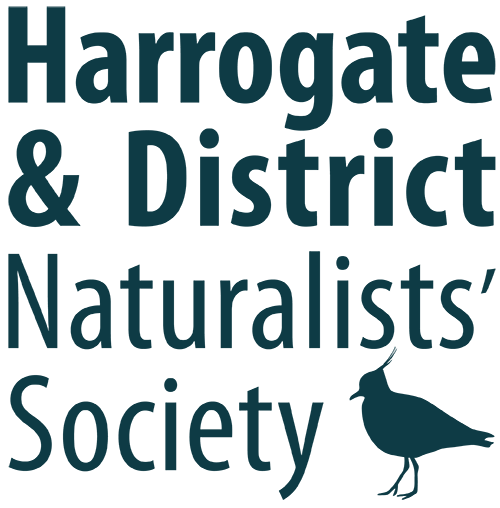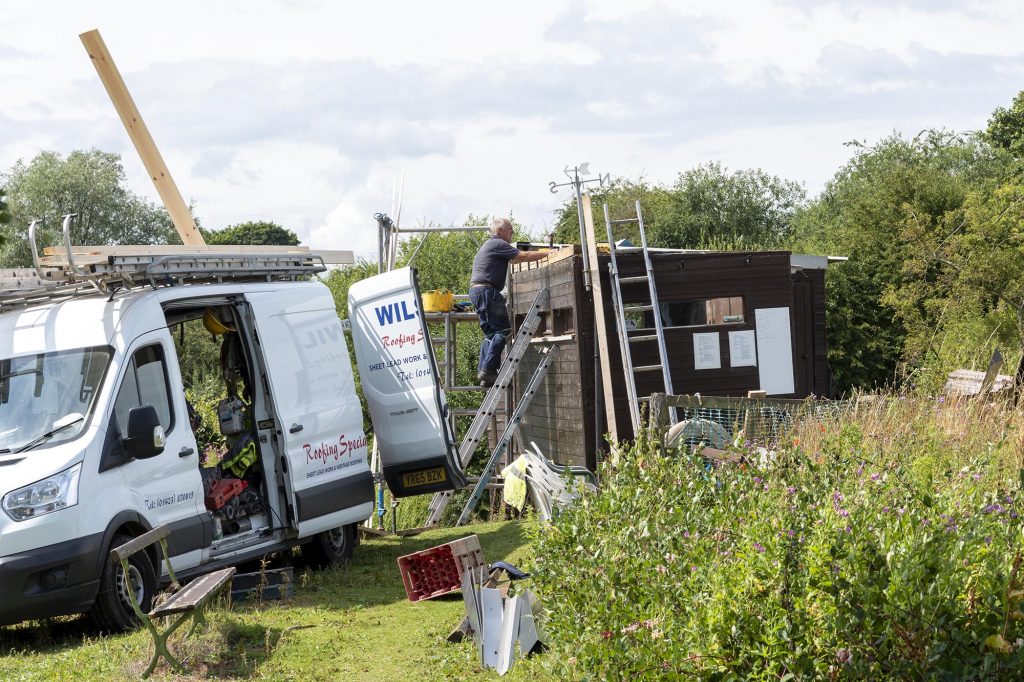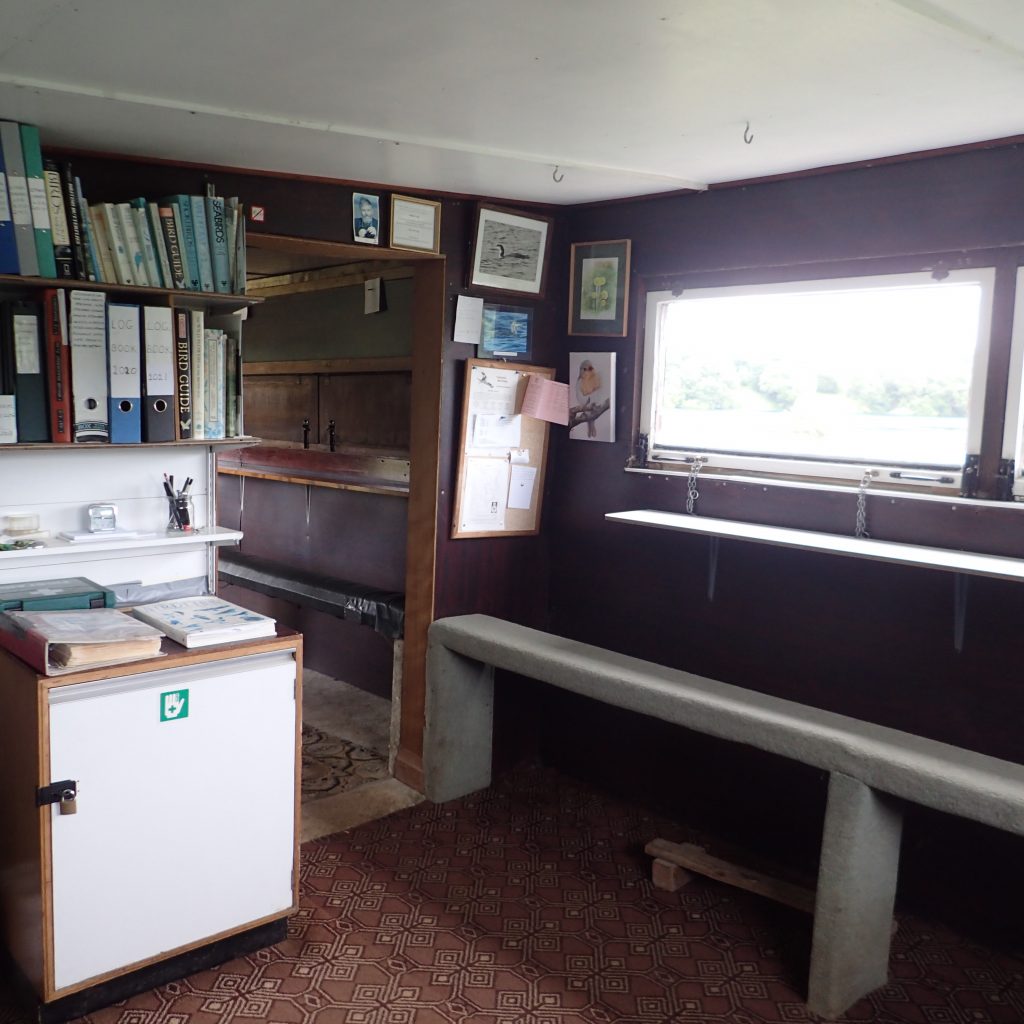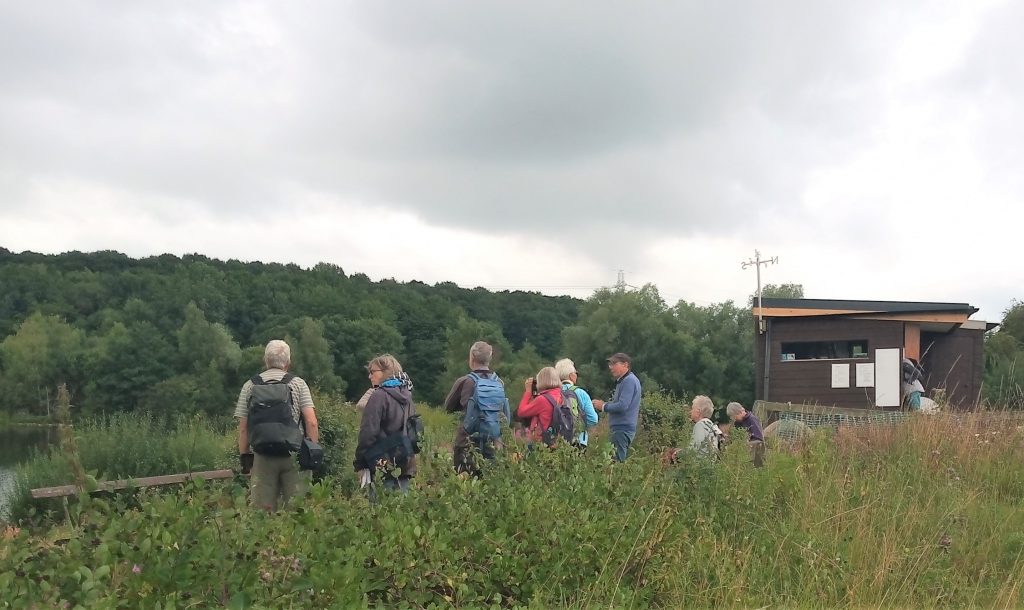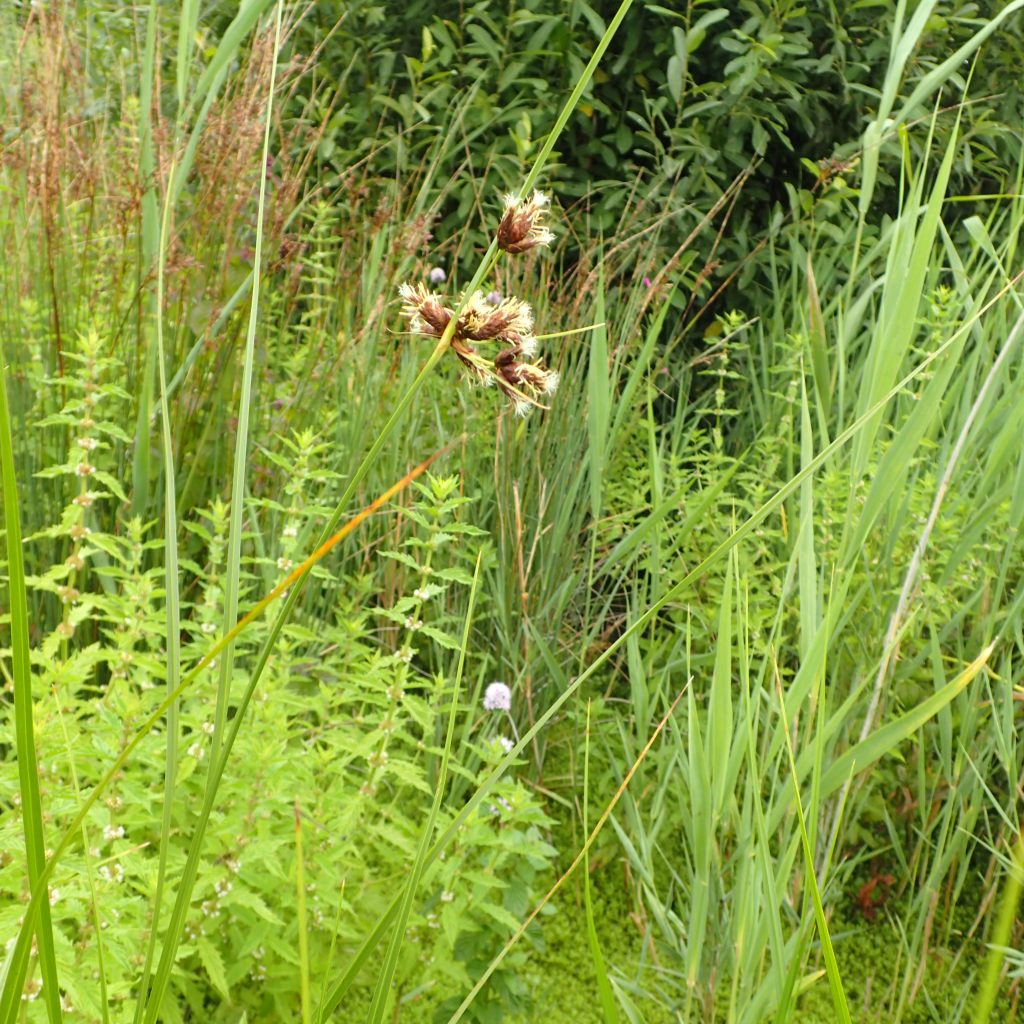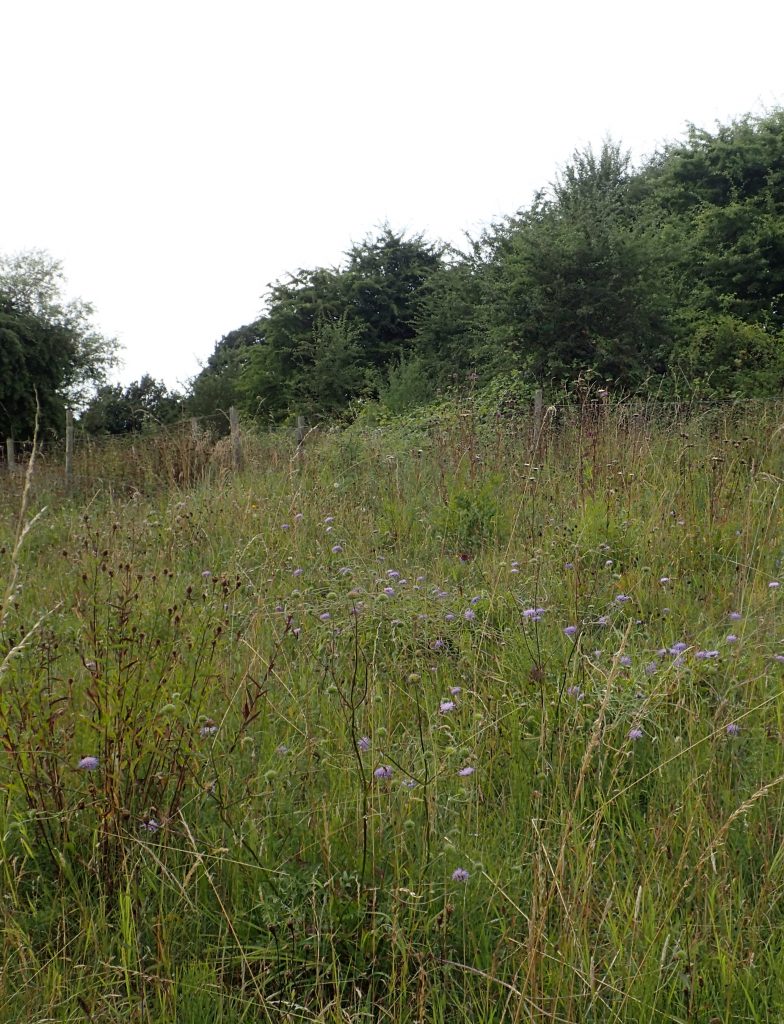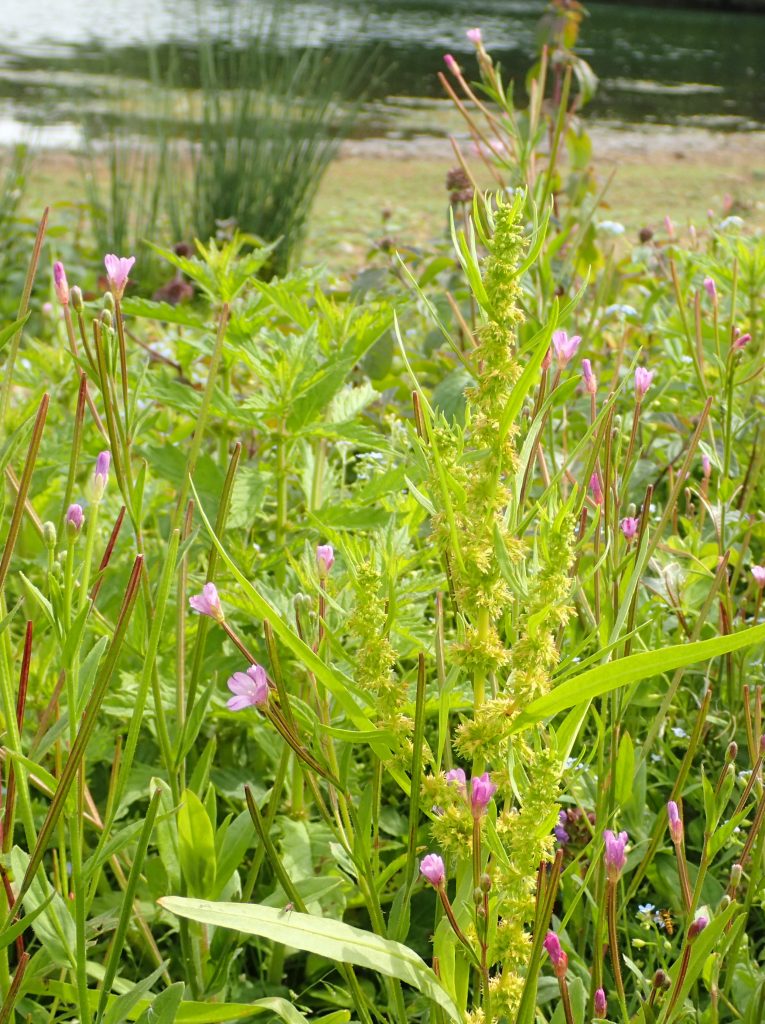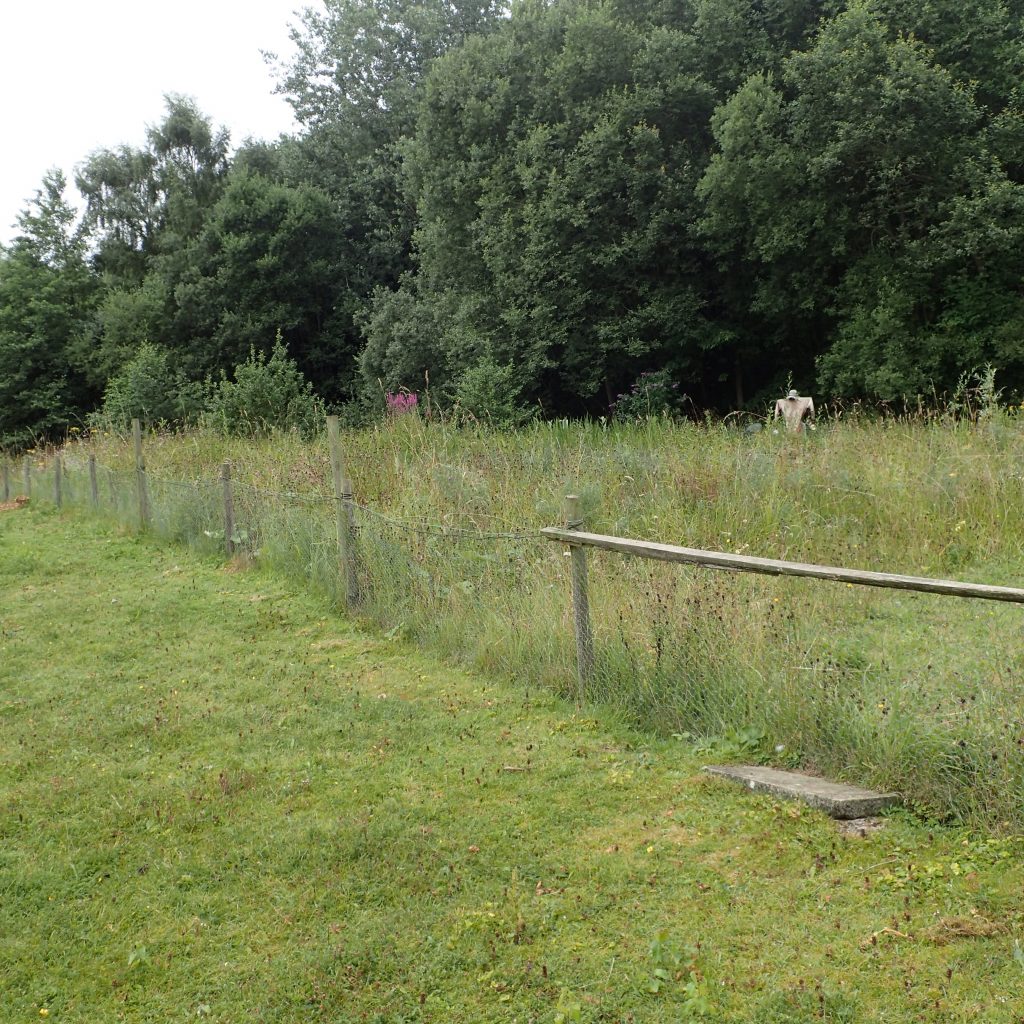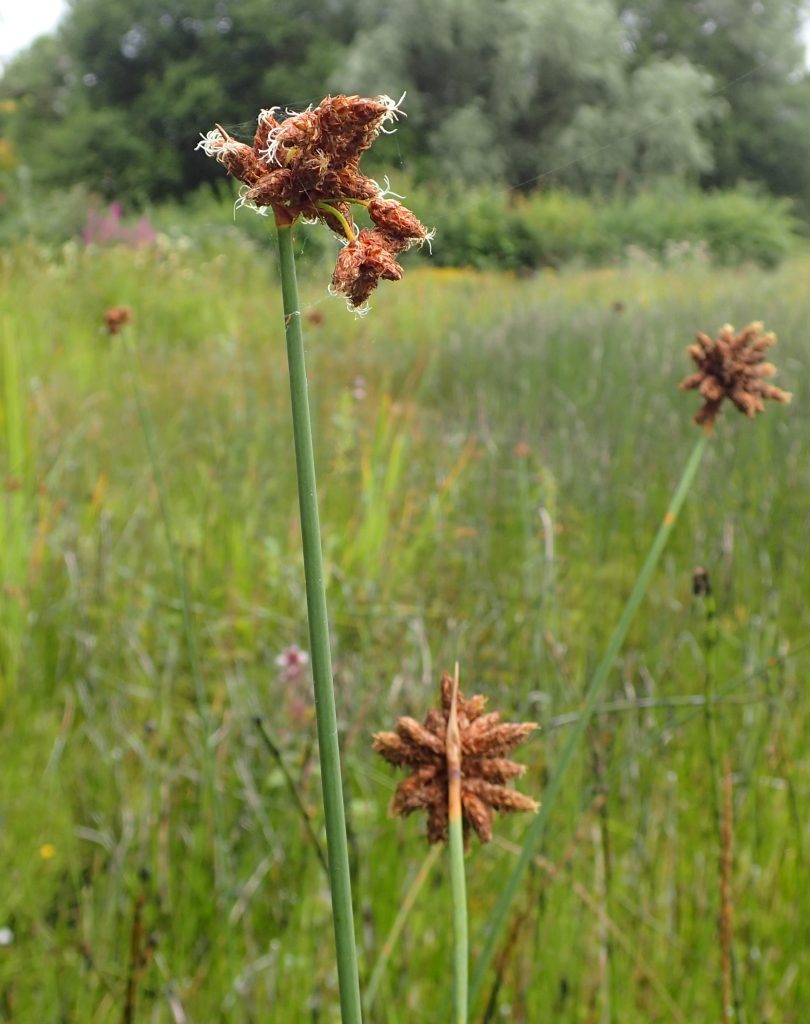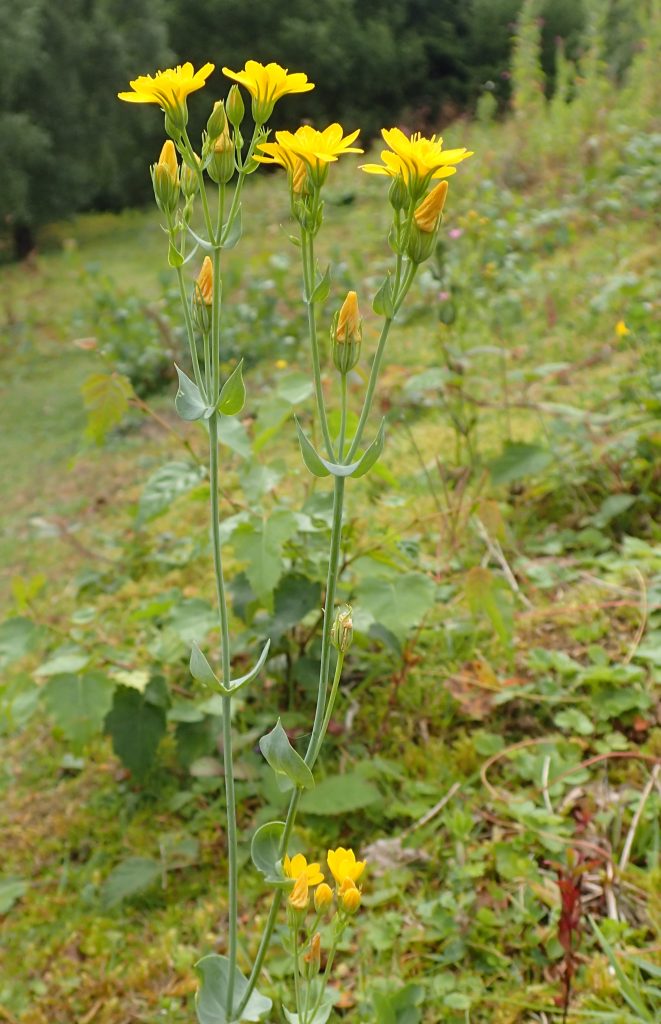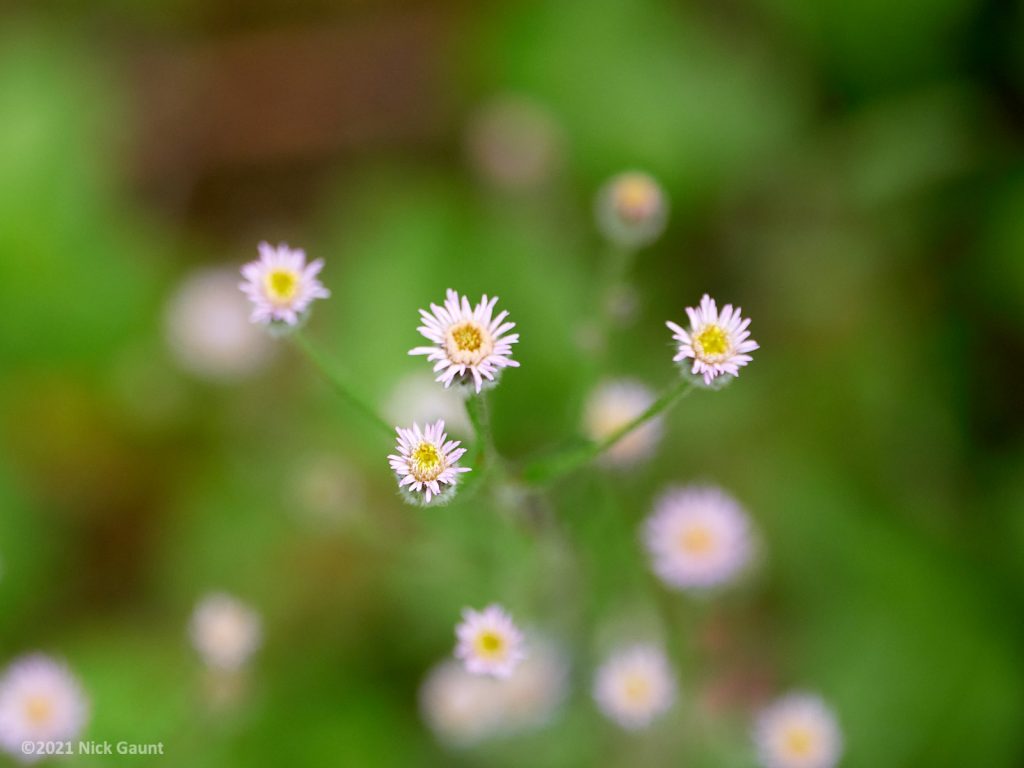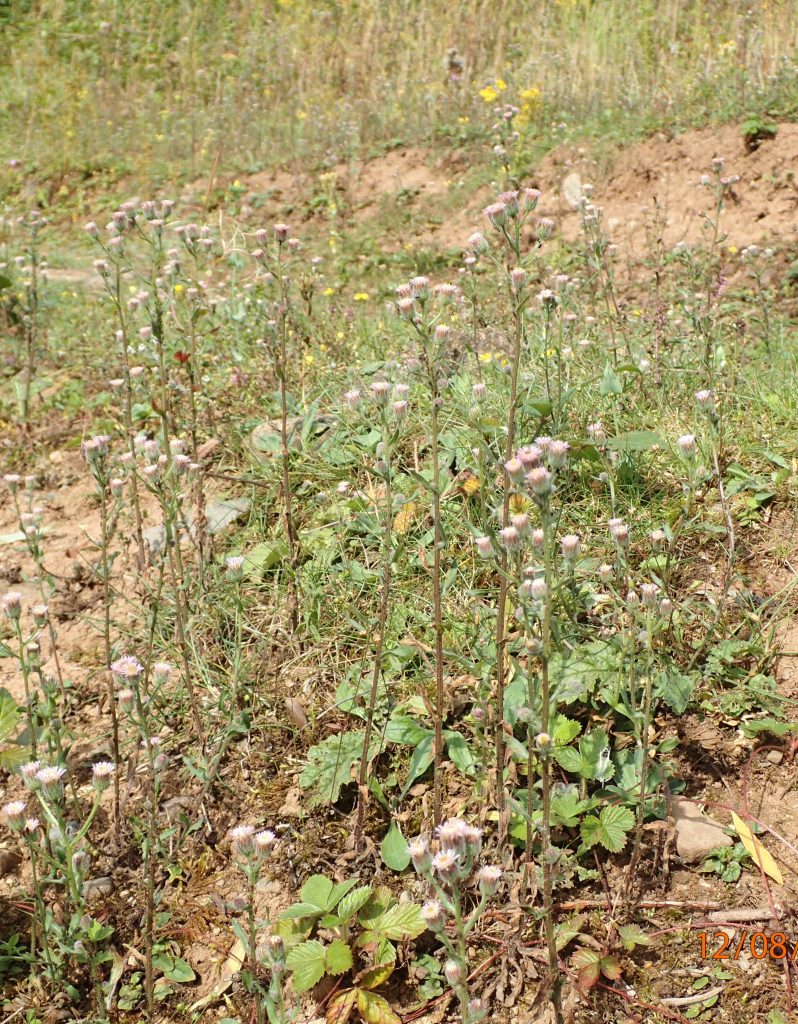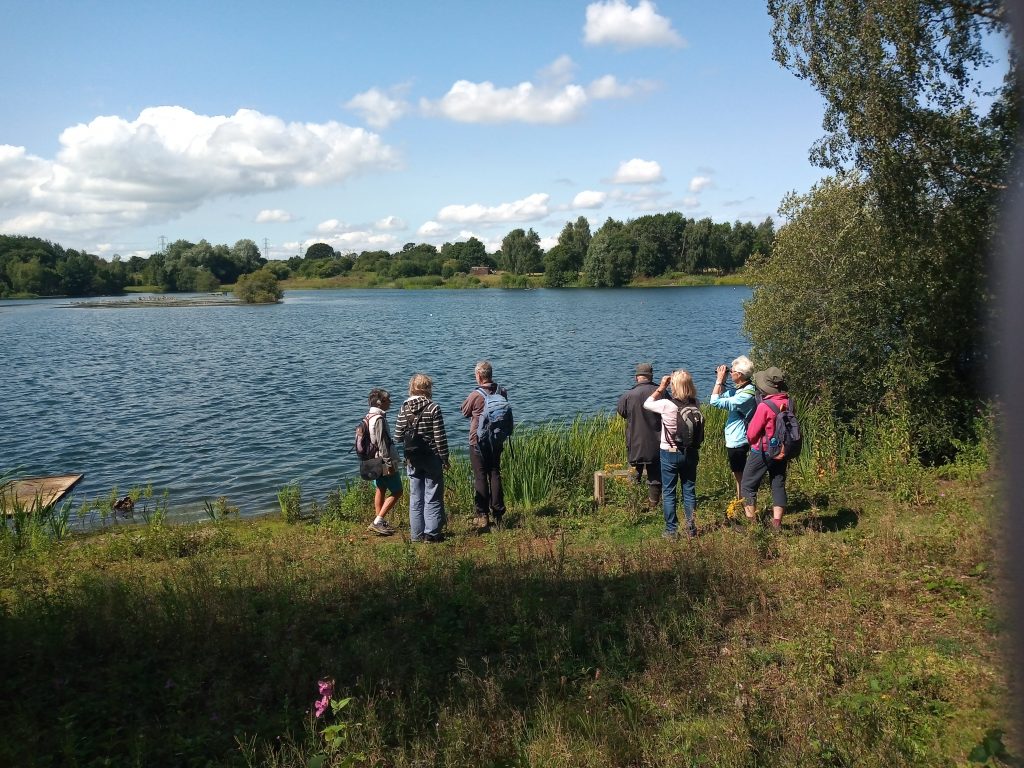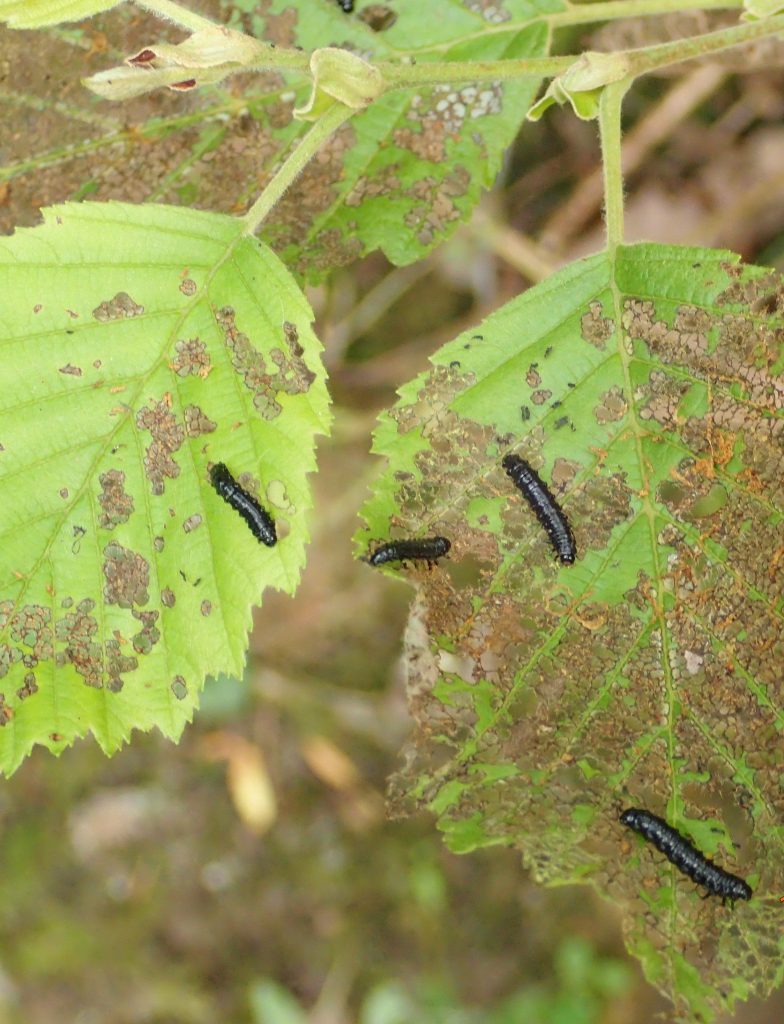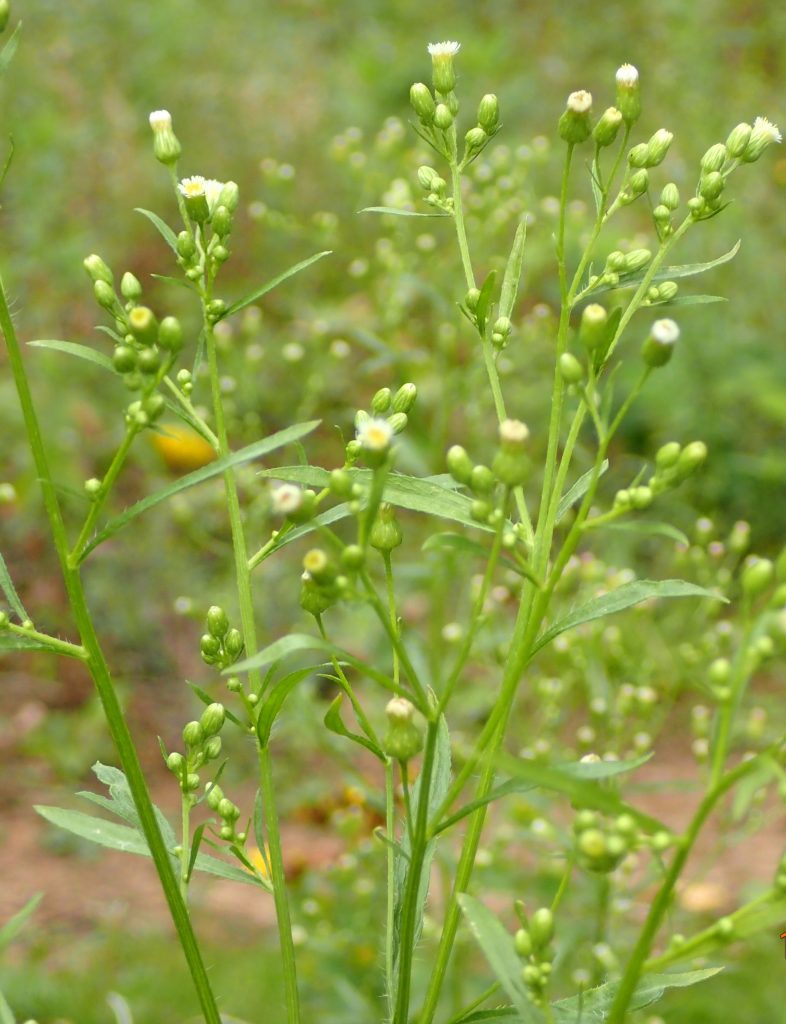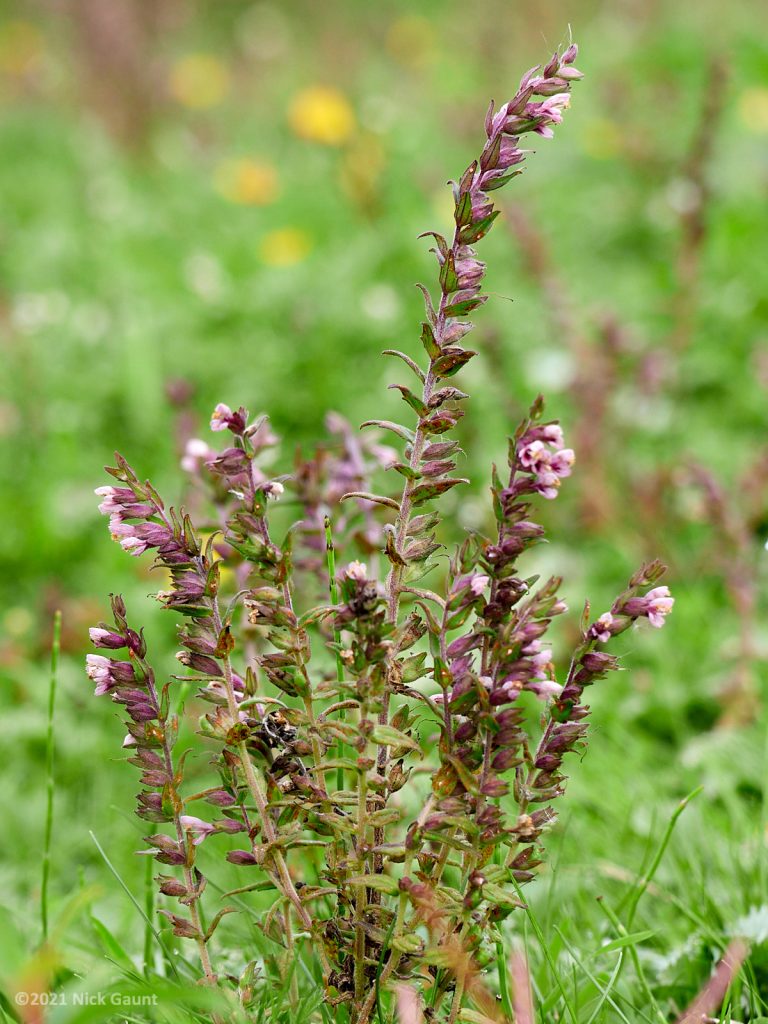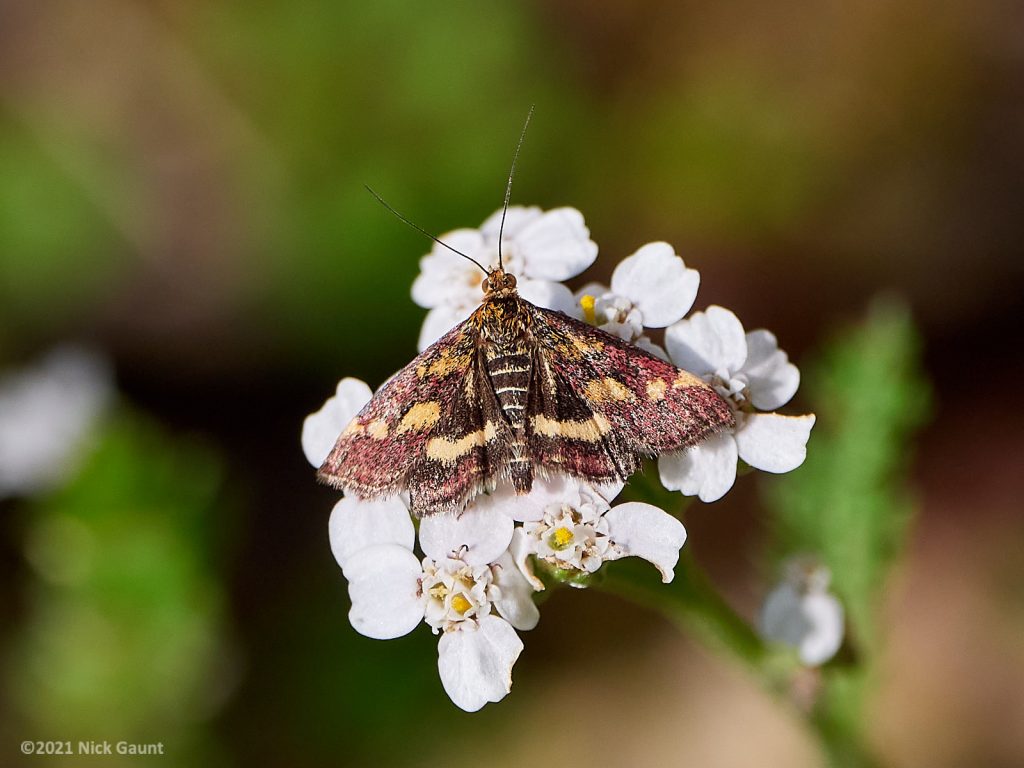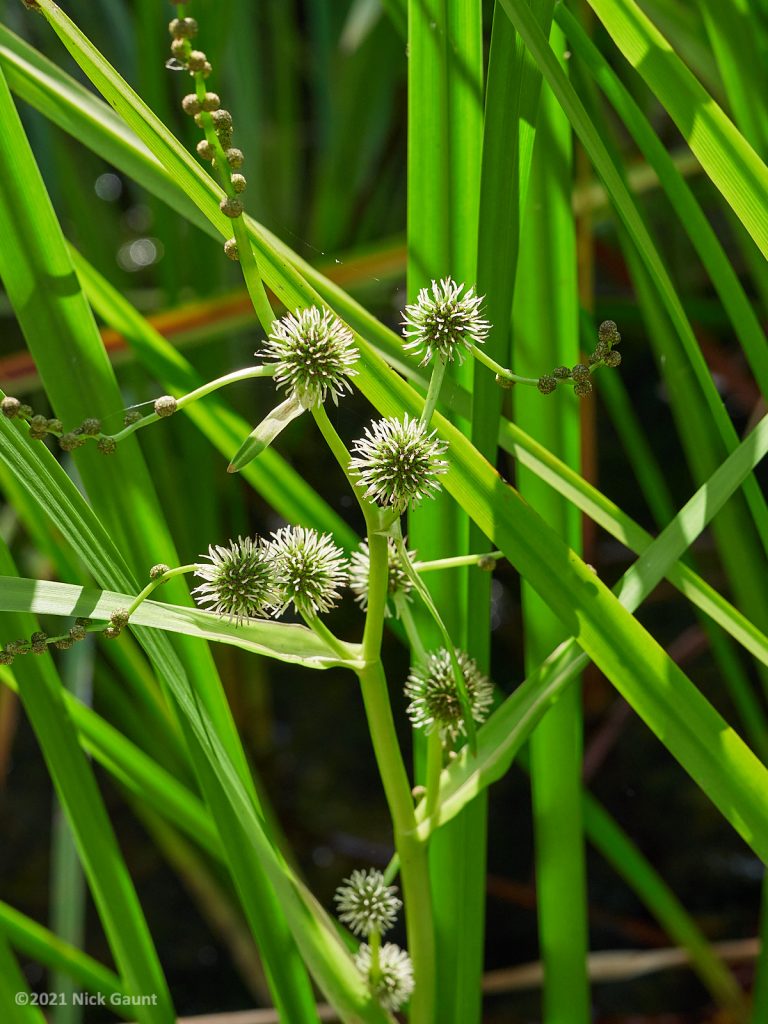A group of 14 HDNS members met for a morning visit to Farnham Gravel Pit. This was the first chance for a couple of members to visit FGP and we were looking forward to walking around the South Lake with them. Details of FGP can be found on the Farnham Gravel Pit pages. We headed off to walk around the lake in an anticlockwise direction. Primarily this was to be a walk with a botany focus, though inevitably we were distracted by the birdlife and, at this time of year, the very active population of dragonflies and damselflies.
Our first stop was to admire the smart new roof over part of the Bird Hide. The work was only completed in the previous week. June Atkinson, Honorary Warden for FGP, had already been busy, cleaning up and restoring order inside. The hide is well stocked with reference books, past records for FGP, and a photo album showing how the site has changed since the 1970s. In front of the Hide mainly low growing vegetation survives, such as; Bird’s-foot Trefoil Lotus corniculatus, Common Centuary Centaurium erythraea, Eyebright Euphrasia agg , Red Bartsia Odontites vernus and just the basal leaves of Bristly Oxtongue Helminthotheca echioides.
The water’s edge is usually dominated by plants like Great Reed Mace Typha latifolia, Yellow Iris Iris pseudacorus, Water Mint Mentha aquatica, Common Spike-rush Eleocharis palustris, and the vigorous Gipsywort Lycopus europus. Surprisingly, at one point, Sea Club-Rush Bolboschoenus maritimus is growing, as it is a plant you would expect to find in brackish water.
A little further on Richard Campbell’s sharp eyes spotted just one small plant of Pink Water Speedwell Veronica catenatagrowing in front of an area fenced off with wire netting. These 2 enclosed areas date from the 1990s. Old photos of FGP show that this area was an extensive rabbit warren with minimal vegetation. Once the wire netting was installed by the HDNS Management Committee typical calcareous grassland plants began to appear. Our visit was just too late to see these 2 areas in full flower. Just 3 small plants of Golden Dock Rumex maritimus, were growing nearby.
The thick vegetation within the pond enclosure kept us busy for some time. At one end of this pond area Hemp-agrimonyEupatorium cannabinum was in full flower and attracting numerous Gatekeeper butterflies Pyronia tithonius. At the further corner Common Club-rush Schoenoplectus lacustris is growing. Water Horsetail Equisetum fluviatile is filling the centre of the pond and, unfortunately, New Zealand Pygmyweed is also trying to do this!
Continuing on the path it was nice to see 2 plants that do not seem to be quite so tasty to rabbits; Common Twayblade Neottia ovata, and Yellow-wort Blackstonia perfoliata! We were a bit late to see the Common Twayblade in flower, but the Yellow-wort was flowering well.
Luckily, late July and early August is perfect timing to enjoy the numerous plants of Blue Fleabane Erigeron acris. This is a plant that flourishes on the dry banks and slopes at the southern end of the lake. We saw plants ranging in height from approx 6 cm to 60 cm. Blue Fleabane is in the Asteraceae family but the petals never open flat as Daisies or Ragwort. Blamey, Fitter and Fitter describe the flowers as having ‘erect dingy purple rays ‘. The plants can be annual or biennial and grow very rapidly. We must have seen hundreds of them, yet in May there would have been little evidence to see.
There is plenty of Alder Alnus glutinosa growing at Farnham, often close to the path. Noticing that some Alder leaves were reduced to mere skeletons we had to stop for a better look. It proved to be the small, black, caterpillar-like grubs of the Alder Leaf Beetle Agelastica alni. The adult beetles can also feed on Alder leaves. Having been absent from UK for about 60 years this beetle has been recorded again since 2004, and is spreading rapidly up through the UK. Close to the Fisherman’s Huts another Fleabane species grows: Canadian Fleabane Conyza canadensis, another fast growing annual with even smaller flowers!
A plant list is attached of just our record for the morning: it is not a comprehensive list. Kevin Walker often refers to Farnham as one of the richest sites for plant diversity in our area. Bird activity was quite quiet that morning but there was time to check a few sightings. Many thanks to Jack Upsall, for arriving especially early to man the entrance gate.
Kerry Morrison
Rooofers at work (Nigel Harcourt-Brown) Inside Farnham Hide (Kerry Morrison) Lining up to visit hide (Kerry Morrison) Sea Club-rush and Gipsywort (Kerry Morrison) Safe from rabbits (Kerry Morrison) Golden Dock (Kerry Morrison) Enclosed pond (Kerry Morrison) Common Club-rush (Kerry Morrison) Yellow-wort (Kerry Morrison) Blue Fleabane (Nick Gaunt) Blue Fleabane (Kerry Morrison) A few minutes for birding (Kerry Morrison) Larvae of the Alder Beetle (Kerry Morrison) Canadian Fleabane (Kerry Morrison) Red Bartsia (Nick Gaunt) Moth (Pyrausta purpuralis), (Nick Gaunt) Branched Bur-reed (Nick Gaunt)
